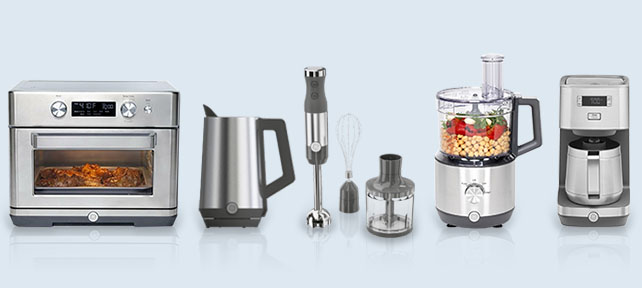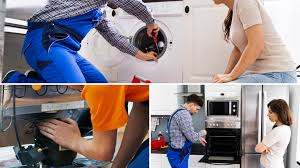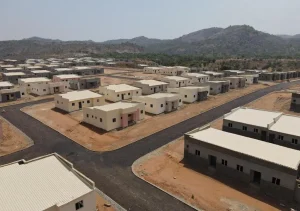
In today’s world, energy efficiency has become a critical aspect of sustainable living. As we face increasing energy costs and growing environmental concerns, finding ways to reduce our energy consumption is more important than ever. This blog post will explore the concept of energy efficiency, its benefits, and practical steps you can take to make your home more energy-efficient.
1. Understanding Energy Efficiency
What is Energy Efficiency?:
- Energy efficiency refers to using less energy to perform the same task or produce the same outcome. It involves improving the efficiency of energy use in various systems and appliances, thereby reducing overall energy consumption.
Why is Energy Efficiency Important?:
- Reducing energy consumption lowers utility bills, saving you money in the long run.
- It decreases the demand for energy, which can help reduce greenhouse gas emissions and combat climate change.
- Efficient energy use can improve the reliability and sustainability of energy systems, reducing the need for new power plants and infrastructure.
2. Benefits of Energy Efficiency
Cost Savings:
- Lower energy bills are one of the most immediate and tangible benefits of energy efficiency. By using less energy, you can significantly reduce your monthly utility costs.
Environmental Impact:
- Energy efficiency helps reduce greenhouse gas emissions, which contribute to climate change. By consuming less energy, you can decrease your carbon footprint and contribute to a healthier planet.
Improved Comfort and Health:
- Energy-efficient homes are often more comfortable, with better temperature control and improved air quality. This can lead to a healthier living environment and improved well-being.
Increased Property Value:
- Energy-efficient upgrades can increase the value of your property. Homes with energy-efficient features are often more attractive to buyers and can command higher prices on the market.
Energy Security:
- Reducing energy consumption can enhance energy security by decreasing dependence on foreign energy sources and reducing vulnerability to energy price fluctuations.
3. Practical Steps to Improve Energy Efficiency
1. Upgrade to Energy-Efficient Appliances:
- Look for appliances with the ENERGY STAR label, which indicates they meet strict energy efficiency guidelines. Energy-efficient refrigerators, washing machines, dishwashers, and HVAC systems can significantly reduce your energy consumption.
2. Install Smart Thermostats:
- Smart thermostats learn your schedule and preferences, adjusting the temperature automatically to save energy. They can be controlled remotely via smartphone apps, allowing you to optimize energy use even when you’re not home.
3. Improve Insulation and Sealing:
- Proper insulation and sealing can prevent heat loss in the winter and keep your home cooler in the summer. Insulate your walls, attic, and floors, and seal gaps around windows and doors to improve energy efficiency.
4. Use Energy-Efficient Lighting:
- Replace incandescent bulbs with LED or CFL bulbs, which use less energy and last longer. Consider using dimmers and motion sensors to further reduce energy consumption.
5. Install Energy-Efficient Windows:
- Energy-efficient windows reduce heat transfer, keeping your home warmer in the winter and cooler in the summer. Look for windows with low-E coatings and double or triple glazing.
6. Optimize Water Heating:
- Water heating can account for a significant portion of your energy bills. Consider installing a tankless water heater, which heats water on demand and uses less energy. Insulate your water heater and pipes to retain heat.
7. Embrace Renewable Energy Sources:
- Consider installing solar panels or wind turbines to generate your own renewable energy. These systems can reduce your reliance on traditional energy sources and lower your energy bills.
8. Practice Energy-Saving Habits:
- Simple habits like turning off lights when not in use, unplugging appliances, and using energy-efficient settings on devices can make a big difference. Encourage your family members to adopt these practices.
4. The Role of Technology in Energy Efficiency
Smart Home Technology:
- Smart home technology, such as smart plugs, smart thermostats, and smart lighting, allows for more precise control of energy use. These devices can be programmed to operate efficiently and can be controlled remotely.
Energy Monitoring Systems:
- Energy monitoring systems provide real-time data on energy consumption, helping you identify areas where you can save energy. These systems can offer insights and recommendations for improving efficiency.
Automation and AI:
- Automation and artificial intelligence (AI) are playing an increasingly important role in energy efficiency. AI can analyze energy usage patterns and make adjustments in real time to optimize energy consumption.
5. Government Incentives and Rebates
Tax Credits and Rebates:
- Many governments offer tax credits, rebates, and other incentives to encourage energy-efficient upgrades. These programs can help offset the initial costs of energy-efficient appliances, insulation, windows, and renewable energy systems.
Energy Efficiency Programs:
- Local utility companies and government agencies often run energy efficiency programs that provide free or discounted energy audits, upgrades, and energy-saving products.
Conclusion
Energy efficiency is a crucial component of sustainable living, offering numerous benefits for both the environment and your wallet. By making smart choices and investing in energy-efficient technologies, you can reduce your energy consumption, lower your utility bills, and contribute to a healthier planet. Embrace the power of energy efficiency and take steps today to create a more sustainable and comfortable home.







